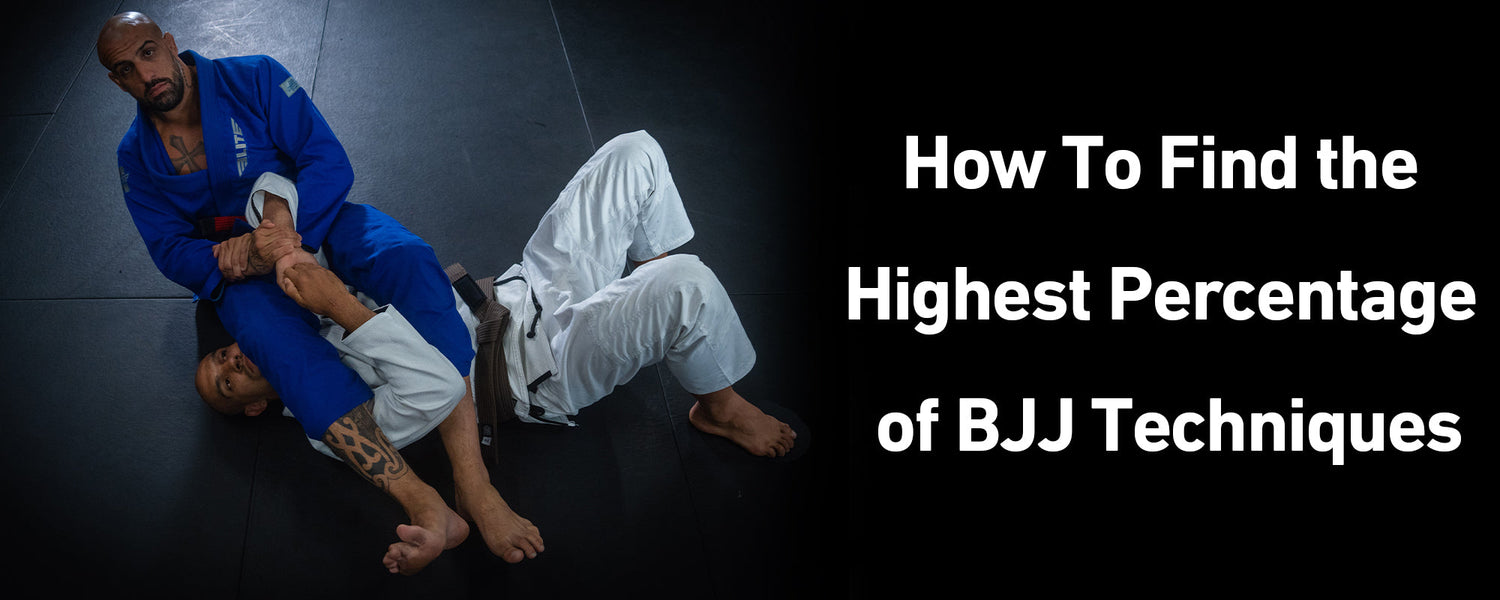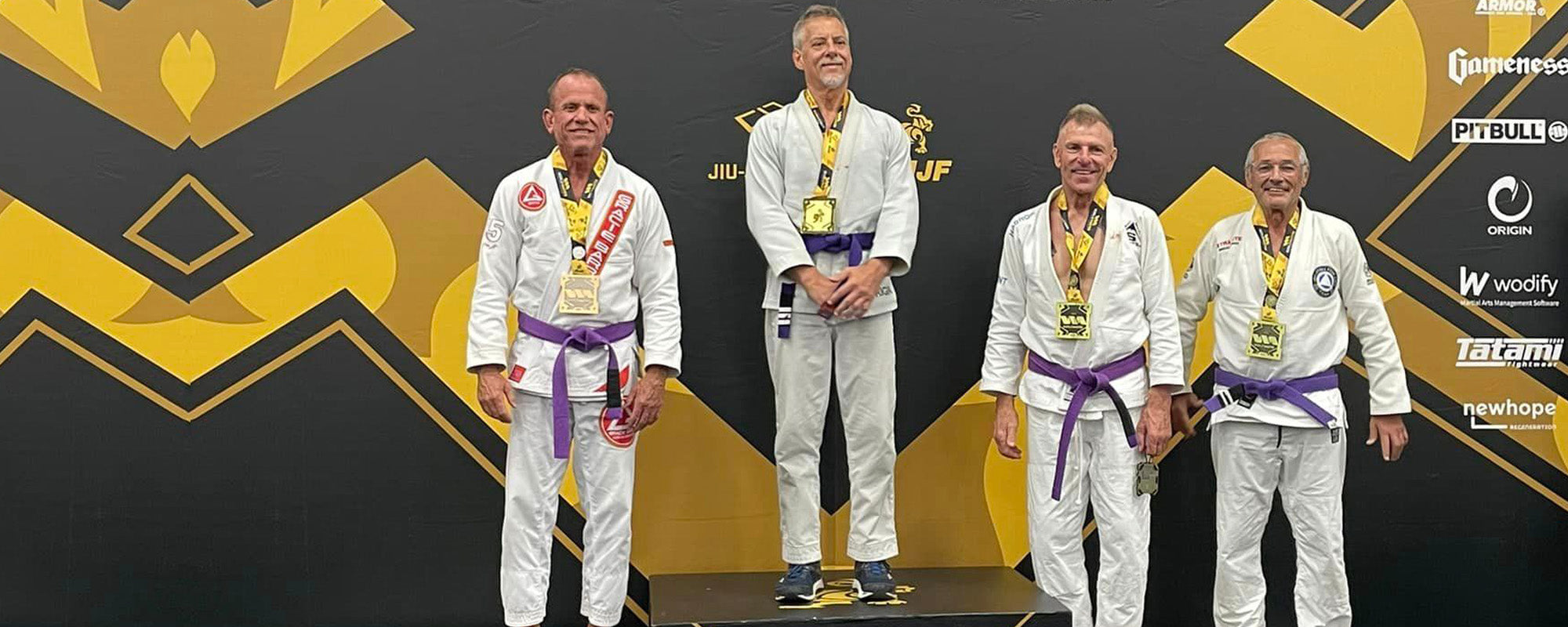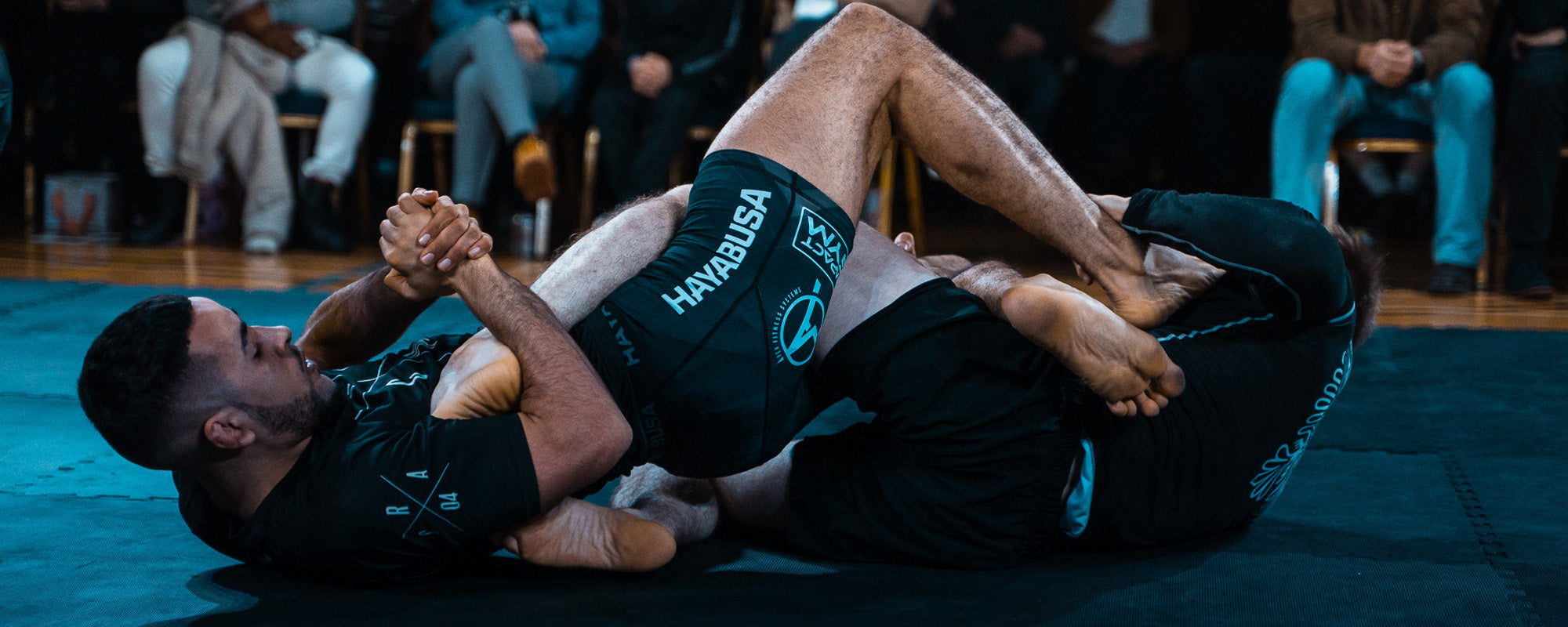Table of content
1. Introduction
Brazilian jiu-jitsu BJJ is a complete defensive structure and a martial art. That puts its emphasis on taking control over a large opponent as well. This profound system is based on the fundamental positions and the grappling techniques. In the art of BJJ, the top contenders focus on the application of the correct submission technique.
The most significant tactics in jiu-jitsu are submission from the back and the mounting technique. The two most basic strategies are to use weight and pressure over the opponent. Moreover, it helps the contender use the most effective and high-percentage techniques that can lead toward victory.
When a submission is used in a controlled manner, it will often make the BJJ fighter aware to go for an escape, as it might cause significant damage. Learning jiu-jitsu submission is one thing, but the correct application of the various techniques can boost the performance of an athlete.
The following is a complete overview of the BJJ submissions that will guarantee your victory.
2. Submission and Rule set
A submission is a technique that forces the assailant to give up by tapping, It is usually done by taking a grappling position and holding the opponent against the neck, arm, and legs. It is quite significant that the effectiveness of the submission depends on its correct application. The ruleset of the submission varies, according to the tournaments, for instance, all leglocks are not allowed under IBJJF guidelines. The techniques of heel lock are not allowed to be used in all degrees. They also vary according to the belt levels of an athlete. The competitions of the gi tournaments will use the gi-based strangles.
However, in jiu-jitsu submissions are the crucial component and an expression of victory. The top contenders of Brazilian jiu-jitsu are effectively utilizing submissions. You must practice the art of submission, which will help you attain the position to submit your opponent in less time.
3. Find the Highest Percentage of BJJ Technique
When we take a look at the highest level of Brazilian jiu-jitsu tournaments such as ADCC, we will notice that there are specific BJJ submissions that show up far more frequently than most of the methods. These are known as the highest percentage of the Brazilian jiu-jitsu techniques. Every athlete is familiar with these methods of submission since they have been proven to be the most useful of all time.
The study was conducted in 2023, and analyzed 7567 submissions, over the time period of eight years. The study demonstrates the highest percentage of the BJJ techniques so far in a competitive setting. We will delve deeper into the classic jiu-jitsu submissions that will boost the higher success rates of an athlete. From the rare neck chokes to the armbars, the correct submissions with accurate timing bring about the path towards victory.
In the years 2022 and 2023, the data of submission was collected which includes the tournaments of the ADCC, WNO, IBJJF, Polaris, and Quintet 4. Some of the samples were taken from the various sources of grappling, which infers the sample of successful submissions. The research shows the highest percentage of BJJ techniques that have been used by the top contenders to achieve victory.

The submissions are working at the highest level so that every athlete can focus on the efforts of submission, which can work wonders. Over the sample size of 7567 tournaments, the measurable submissions are 1407, where you can track the success and failure of an athlete. On the list of 86 submissions in the sample, the armbar appeared at the top of all.
The top three submissions the armbar, rear neck choke, and collar choke came up to be the most effective jiu-jitsu submissions by the highest percentage.

From the graph above, we can clearly infer that 53 percent of the finishes are from the chokes and the rest of 47 percent from the submissions of arms and legs.
Here is the list of a quick breakdown of the eight most popular submission techniques:
4. 8 Effective BJJ Techniques
4.1. Collar Choke
The success rate of the collar chokes is about 75 percent out of 99 attempts. Collar chokes are considered to be the most effective submission technique in a grappler toolkit. The results of the different Brazilian jiu-jitsu competitions, such as the IBJJF Worlds and Brasileiros, indicate that specific submissions led to victory.
The use of the back choke technique created a significant difference in the performance of an athlete. Many of the Brazilian grapplers were involved in the application of collar chokes. The most amazing part is that 75 percent of the collar chokes were attempted, which headed toward victory.
Collar choke is a versatile method of submission that comes in a variety of variations for varying positions and situations. Down below is a list of the collar chokes that are frequently used by the top BJJ fighters:
- Cross-Collar Choke
- Loop Choke
- Bow and Arrow Choke
- Clock Choke
- Paper Cutter
4.2. RNC Rear-Naked Choke
The rear-necked choke is considered to be the most significant position. It is the most popular submission method that is attained by holding the opponent from the back. If you are at the back of your opponent, it is advantageous because you can grab their neck and they have limited access to you. Chokes from the back provide the highest percentage of submissions in jiu-jitsu as they can be used by any rank or belt level.
Rear-necked choke is known by several names such as RNC, Lion Killer, Mata Leão, and Sleeper Hold. As you can easily put your opponent to sleep, it is considered the logical selection in No-Gi bouts. On the other side, the bow and the arrow choke are most suitable in Gi tournaments. Moreover, this choke gives you a tremendous advantage against the larger opponent.
It is the king of the chokes that provides the best possible chance of victory in jiu-jitsu. The success rate of the rear naked choke (RNC) is 42 percent; it is the most popular submission technique in the Ultimate Fighting Championship. It acts as a fundamental tool and widely known submission technique in BJJ. It is a vital part of a grappler’s arsenal and works more effectively in No Gi competitions. In the tournament, taking the back of an opponent will grant you four points and in a defense situation it is the most appropriate position taken in any adversity.
4.3. Armbar
Armbar has a success rate that remains at the top, as you have observed in the jiu-jitsu matches. Out of 137 attempts, almost 50 percent of the victories make a considerable difference in the BJJ competitions. It is a quite significant fact that the success rate varies in the gi and no-gi competitions.
It is a perfect submission that can be easily applied to the podium of mixed martial arts or jiu-jitsu. The submission technique of the armlock can be a single or double-joint lock that hyperflexes the elbow joint and the shoulder joint. As the armlock hyperextends the elbow, it is known as an armbar. It requires the use of full body leverage to achieve the effectiveness of the armbar.
While performing on the ground the position of the side mount, mount or guard will help the fighter grasp the opponent with the armbar submission. It is considered the most common joint lock that is used as the submission lock in BJJ. Armbar is the less risky submission that is used in the combat arts.
The armbar and its variations are used when you are in the guard position, or you can attain the armbar from the side position. You can utilize it to connect the other submission techniques for intense triangle choke, and often wrist locks. It comes with versatility and the armbar is used from every side control, position. In this way, the armbar appears at the top in the highest percentage of BJJ techniques. Note that its success rate differs from the Gi and no Gi competitions.
4.4. Americana
The success rate of the Americana is 70 percent. It is the major submission technique that is learned by every jiu-jitsu beginner. Americana is also known as the keylock, bent armlock, or four-figure armlock. In Judo, it is popular by the name of ude garami. In this submission method, the fighter takes control of the opponent’s arm with the use of double wrist control.
The fighter can leave a powerful impact on the elbow and shoulders of the opponent. The position is commonly taken with the side mount and could be applied to the top. Although the submission method of Americana can be achieved from many positions, it creates rotational pressure, which produces severe pain in the shoulders and the elbow.
This technique of submission perfectly represents the functioning of the fulcrum and leverage points in jiu-jitsu. The move of Americana is the fundamental method of submission, that is taught to the white belts.
4.5. Bow and Arrow Choke
The success rate of the Bow and Arrow Choke is 89 percent, it is the most operative submission technique in jiu-jitsu. The bow and arrow chokes work well in the Gi competitions. It has the highest percentage in the major competitions of jiu-jitsu.
When it comes to putting the fighter's opponent in an unconscious state, a bow and arrow choke works very well. It is one of the greatest strangles in jiu-jitsu, that can take the choking strategy to the next level. Bow and cross arrows can allow the fighter to exert an unstoppable force on the carotid arteries and all around the neck of the opponent. Choking the individual stops the supply of oxygen to the brain. This submission method comes with three different variations, the one is putting pressure on the two sides of the neck, which requires less time and a little pressure. The other choke is to put someone to sleep via air chokes.
The third choke is related to the downward bending of the head so that the chin touches the chest. It is the chest compression choke that puts pressure on the thorax, which creates trouble to inhale properly.
4.6. Heel Hook
The success rate of the Heel hook is 20 percent out of 190 attempts. This submission technique is mostly prevalent in the No Gi tournament. Heel hooks are a versatile submission method. It is regarded as the strongest leg submission in jiu-jitsu. If submission of the heel lock is not applied correctly then it can cause major damage to the body.
A heel lock is a submission that locks the legs and can affect multiple joints. It is applied by twisting the foot, the torsional force puts great force on the ankle and it transfers the force toward the knee. Heel lock is performed by placing the legs around the leg of your opponent, and holding the opponent's foot in the armpit of the same position, giving a little twist after it. This submission move is referred to as a reversed, inverted, or inside-heel hook.
4.7. Kimura Lock
The success rate of the Kimura Lock is 23 percent, it is the arm submission in jiu-jitsu and an effective tool for passing half guard in the competition. Kimura lock is a successful tool in the gi competitions as compared to the no-Gi competitions. This features the additional grips and control over the Gi and you can secure the Gi for submission.
This is a considerable point to heed that Kimura's effectiveness is based on the competition format. So to make your BJJ arsenal more effective, you have to plan your game with the incorporation of a Kimura lock that can have a remarkable effect on the submission strategy.
Kimura lock is also known as the gyaku ude-garami in Judo and is a double wrist lock. In 1951, Masahiko Kimura defeated Helio Gracie with a joint lock, and that particular submission is named after the jiu-jitsu fighter. Kimura Lock is a submission that relies on isolating the shoulder and elbow joints, with the use of the wrist grip the fighter can apply leverage against the two joints. This submission system comes with a variety of transitions, passes, takedowns, sweeps, and takedown counters.
4.8. Triangle Choke
The triangular choke, also known as Sankaku-Jime in judo, is yet another iconic submission technique in jiu-jitsu. It is the eighth most essential arsenal for the grappler and requires a bit more practice to master. It is a type of choke that encircles the neck of the opponent and requires the use of one arm and legs that take the shape of a triangle, that is why it is known as the triangle choke. This technique of choking restrains the blood flow from the brain, which results in the loss of consciousness within seconds.
The rate of success of the triangle choke is 40 percent, and the studies show that the triangle choke can render the opponent in 9.5 seconds if it is applied properly. The results show that 45 out of 70 triangle chokes were finished in Gi tournaments. If we talk about the variations of this submission, then it reveals that the side triangle comes with a 40 percent success rate. The best part is that you can apply the triangle choke from side control, closed guard, and even from the mounting position.
5. Least Effective BJJ Techniques
Now move toward the list of the least effective submissions in Brazilian jiu-jitsu that has the highest rate of failure:
- Buggy Choke
- D'arce
- Inverted Armbar
- Toe Hold
- Omoplata
6. Final Thoughts
Jiu-jitsu is a complete defense system that intensifies the control over your opponent. This martial art of jiu-jitsu is ground-based and moves around the positional hierarchy of submissions. The two most dominant positions for submitting are from the back and mount. These positions have a higher percentage in Brazilian jiu-jitsu as compared to others.
The submission in jiu-jitsu relies on the maximum control over the opponent with leverage. The top contenders work on the smooth application of the submission, which will make your opponent tap out. Notice that the effectiveness of the submissions is not dependent on their practical execution but on their ability to apply it correctly. Practice the highest percentage of BJJ techniques and achieve success.









Leave a comment
This site is protected by hCaptcha and the hCaptcha Privacy Policy and Terms of Service apply.